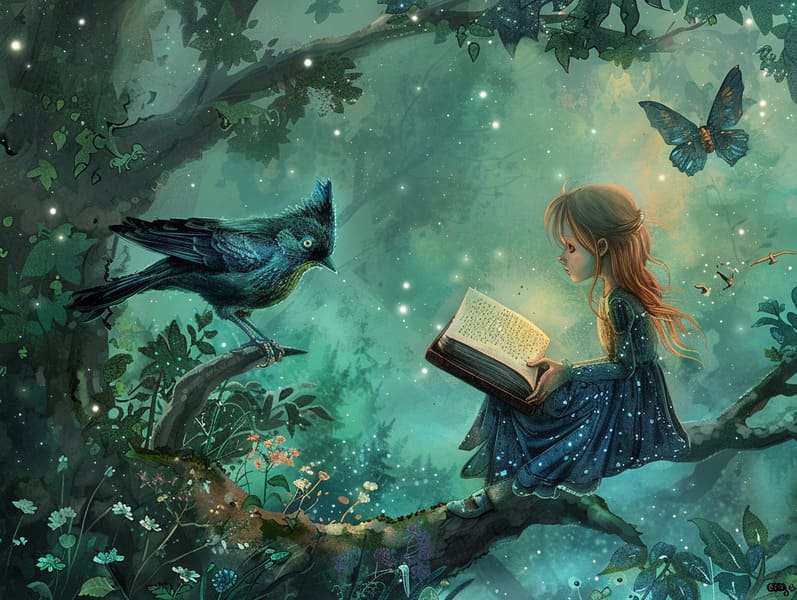Exploring the Roots of Popular Fairy Tales with Their Unceasing Captivation.
Exploring the Roots of Popular Fairy Tales with Their Unceasing Captivation.
Blog Article

Classic fairy tales have deep roots. These tales have been shared from one generation to the next ages before they were ever transcribed. They sprang from a variety of societies, including American traditions. They were initially transmitted among older generations, often carrying themes and messages mirroring the societal norms and beliefs of the time.
Jacob and Wilhelm Grimm, Jacob and Wilhelm (the Grimm brothers), were among the first to compile many of these beloved stories. Their compilation, "Grimm's Story Collection," included narratives like "The True Bride," "The Bread Crumb Trail," and "Snow-White and Rose-Red," which have since become staples in the world of famous fairy tales. Similarly, Hans Christian Andersen's charming stories, such as "The Little Mermaid," and "The Little Duckling," have floated into hearts worldwide, solidifying their place in the pantheon of classic fairy tales.
Even though they are old, traditional fairy tales remain as relevant as ever, especially as bedtime stories for kids. These delightful tales are now available in various formats, including beautifully illustrated books, captivating animations, and free fairy tales online.
Their persistent charm can be credited to several enchanting factors:
Crucial Morals: Classic fairy tales often convey important moral lessons. Narratives like "The Tale of the Boy Who Cried Wolf" teach the importance of truth, while "The Tortoise and the Hare" underline the benefits of persistence and unpretentiousness. These tales offer little ones clear distinctions between good and bad, guiding their moral compass in a soft yet meaningful way.
Compassion and Insight: Classic fairy tales frequently include protagonists facing tests and troubles, inciting audiences to sympathize with their struggles and support their triumphs. For instance, "Beauty and the Beast" points out the merit of seeing beyond looks to realize the inner core of a being, promoting insight and awareness.
Cultural Insights: Many classic fairy tales are deeply ingrained in the cultural contexts from which they blossomed. Exploring these tales can provide intriguing perspectives into different cultures, strengthening a sense of global respect and perception.
Fantasy and Innovation: The fantasy-filled elements in fairy tales—supernatural elements—foster children’s creativity. These stories take readers to magical realms, invigorating fantasy-filled thoughts and a sense of magic that persists a lifetime.
Old fairy tales are not only mesmerizing but also instructive. They work as charming tools in enhancing various mental and emotional abilities in young ones. When timeless fairy tales are recited, they enhance language skills by presenting new awesome site word meanings and complex sentence structures. This practice also enhances auditory skills and mindfulness, as little ones track the narrative, anticipating to see what happens next.
Furthermore, talking about the themes and characters of classic fairy tales can develop analytical skills and intellectual skills. The young learn to discern patterns, anticipate outcomes, and make sense of cause and effect. These explorations also ease the young verbalize their thoughts and feelings, enhancing their emotional intelligence.
In today’s digital era, the existence of internet fairy tales has made these tales more reachable than ever. Internet resources and web apps offer broad selections of ancient fairy tales that can be perused or listened on anytime, anywhere. Fairy tales told out loud are particularly sought after, giving an engaging way for kids to relish these whimsical stories. Read-aloud books and read-out-loud videos transport characters and settings to life, often enhanced by enchanting audio effects and melodies that boost the storytelling experience.
The enduring charm of ancient fairy tales lies in their ability to adapt to current eras while keeping hold of their central values. Contemporary adaptations of these tales often spotlight more different figures and modern settings, making them accessible to today’s audience. However, the core values of guts, sympathy, and even-handedness remain unchanged, continuing to touch children of all ages.
Ancient fairy tales also offer a sense of coziness and closeness. They confer upon a well-structured narrative with a recognizable beginning, middle, and end, often wrapping up with the resolution of conflicts and the triumph of honesty over deceit. This reliability can be consoling for children, furnishing a sense of firmness in an fluid world.
Traditional fairy tales continue to spellbind and educate new generations, maintaining their attraction and pertinence in modern society. As nighttime stories for kids, they disclose a perfect blend of fantasy and learning, nourishing moral values, empathy, and creativity. The availability of free fairy tales online and the commonness of fairy tales read out loud affirm that these classic narratives remain obtainable to new generations.
By protecting and conveying these tales, we continue to honor the rich tapestry of narrative artistry and cultural heritage. Whether you are viewing a beautifully illustrated book, experiencing a digital collection, or listening via an audiobook, the majesty of old fairy tales is always within reach. These stories teach us of the enduring impact of stories and its ability to join us across generations and cultures.
Regardless if you are experiencing a beautifully illustrated book, viewing a digital library, or listening to an audio story, the majesty of traditional fairy tales is always within reach.
These stories show us of the steadfast presence of fairy tales and its ability to connect us across generations and cultures, establishing a link that charms and informs alike.